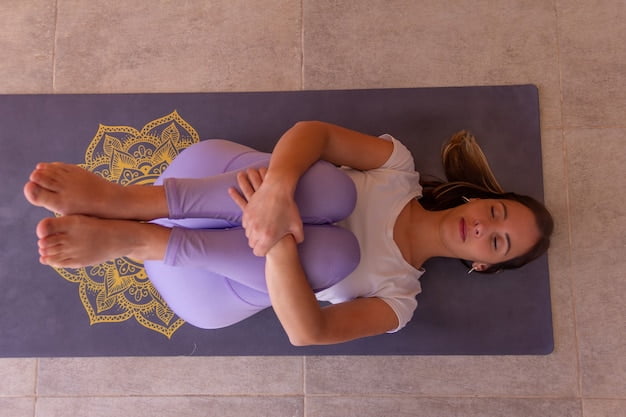
Contents
- 1 Introduction
- 2 Understanding the Knee-Chest Position
- 3 Benefits of the Knee-Chest Position
- 4 When to Practice the Knee-Chest Position
- 5 Proper Technique
- 6 Conclusion
- 7 FAQs (Frequently Asked Questions)
- 7.1 1. Is the knee-chest position safe for all pregnant women?
- 7.2 2. How long should I stay in the knee-chest position?
- 7.3 3. Can the knee-chest position turn a breech baby?
- 7.4 4. Can I practice the knee-chest position if I have knee or wrist problems?
- 7.5 5. Are there any precautions to take when practicing the knee-chest position?
Introduction
Pregnancy is a remarkable journey that comes with its fair share of discomforts and challenges. One such challenge is maintaining the right posture to alleviate stress and discomfort on the body. Among various recommended positions for pregnant women, the knee-chest position stands out as a valuable practice to enhance comfort and promote fetal well-being. In this article, we will delve into the benefits and proper technique of the knee-chest position during pregnancy.
Understanding the Knee-Chest Position
The knee-chest position is a simple yet effective posture that involves a woman positioning herself on all fours with her knees on the ground and her chest lowered. The arms should be extended forward, and the head should be in line with the spine. This posture resembles a crawling position but with a few modifications.
Benefits of the Knee-Chest Position
1. Reducing Back Pain
During pregnancy, the added weight and the shift in the center of gravity can lead to significant back pain. The knee-chest position helps distribute the weight evenly, reducing strain on the lower back muscles.
2. Alleviating Digestive Issues
Many expectant mothers experience digestive discomfort, including acid reflux and heartburn. The knee-chest position can alleviate these issues by allowing gravity to keep stomach acid from flowing into the esophagus.
3. Enhancing Fetal Positioning
The knee-chest position can encourage the baby to move into an optimal birthing position, such as head-down. This can contribute to a smoother and safer delivery.
4. Easing Pressure on the Pelvis
Pregnancy often leads to pressure on the pelvis, causing discomfort. Adopting the knee-chest position can help relieve this pressure by aligning the pelvis and promoting better circulation.
When to Practice the Knee-Chest Position
It’s essential to practice the knee-chest position at the right times during pregnancy:
a. During the Third Trimester
The third trimester is the ideal time to start practicing the knee-chest position regularly. This allows your body to adapt to the posture and reap its benefits.
b. After Meals
To prevent digestive discomfort, consider assuming the knee-chest position after meals for about 10-15 minutes.
c. As Part of Prenatal Yoga
Many prenatal yoga classes incorporate the knee-chest position as a beneficial practice for pregnant women.
Proper Technique
To ensure you perform the knee-chest position correctly, follow these steps:
Step 1: Find a Comfortable Surface
Use a yoga mat or a soft surface to kneel on. This will provide better support for your knees and ensure comfort.
Step 2: Position Your Knees and Hands
Get on all fours with your knees directly under your hips and your hands shoulder-width apart. Keep your wrists aligned with your shoulders.
Step 3: Lower Your Chest
Slowly lower your chest toward the ground while keeping your head in line with your spine. Extend your arms forward as you do this.
Step 4: Breathe Deeply
While in the knee-chest position, take slow, deep breaths to relax your body and mind.
Conclusion
The knee-chest position in pregnancy is a valuable practice that offers a range of benefits, including pain relief, improved digestion, and optimal fetal positioning. By understanding the proper technique and incorporating it into your routine, you can enhance your pregnancy experience and promote the well-being of both you and your baby.
FAQs (Frequently Asked Questions)
1. Is the knee-chest position safe for all pregnant women?
The knee-chest position is generally safe, but it’s advisable to consult with your healthcare provider before starting any new exercise or posture during pregnancy.
2. How long should I stay in the knee-chest position?
It’s recommended to stay in the knee-chest position for about 10-15 minutes, but you can adjust the duration based on your comfort level.
3. Can the knee-chest position turn a breech baby?
While the knee-chest position may encourage optimal fetal positioning, it’s not a guaranteed method for turning a breech baby. Consult your healthcare provider for guidance.
4. Can I practice the knee-chest position if I have knee or wrist problems?
If you have existing knee or wrist issues, it’s essential to modify the posture or consult with a prenatal yoga instructor for alternative positions that suit your condition.
5. Are there any precautions to take when practicing the knee-chest position?
Avoid sudden movements and overexertion. Listen to your body, and if you experience any discomfort or pain, discontinue the posture and consult your healthcare provider.



